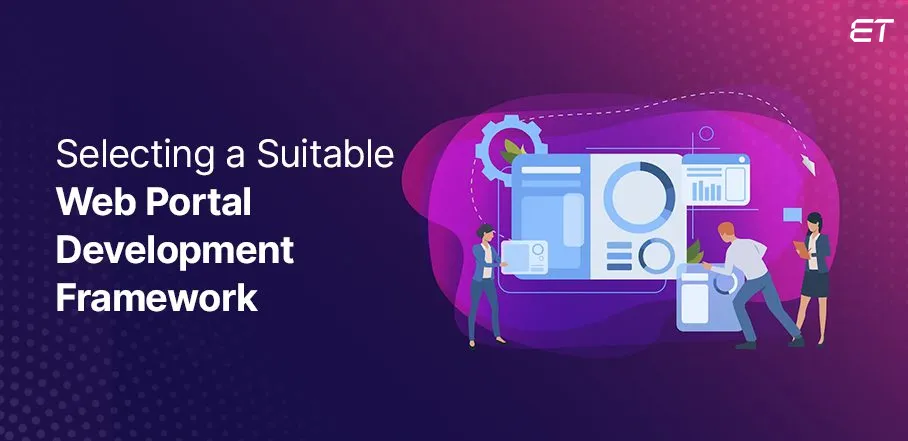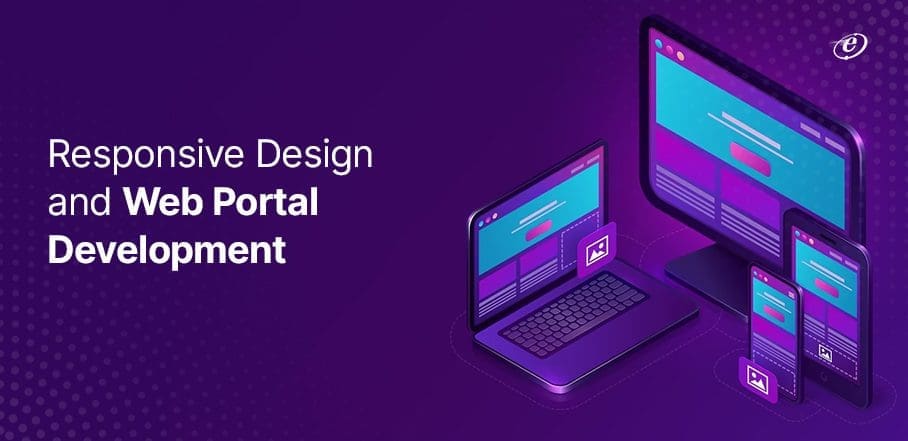
The Importance of Responsive Design in Web Portal Development
Today, your business needs to stay up to date with the latest technological trends. The implementation of certain elements can have a positive impact on your online assets.
Talking about online assets, you might be leveraging web portal development to create a foolproof set of online pages for the target audience. Facets like responsiveness, speed, and good UI can augment the quality of these web portals.
To elevate your brand’s online quality, you need to capitalize on responsive design. This design style has Google’s recommendation and can help you create engaging, device-friendly online pages.
So, before contacting a responsive web design company, understand this concept and how it boosts the portal development process.
A Quick Look at the Concept of Responsive Design

What is your focus when you start any project of custom web portal development?
You must be thinking of developing portals, first for a desktop view and then for smartphone screens. In some cases, you must have a plan to use Flutter for cross-platform portal development. Irrespective of your strategy, designing for various devices can seem like a hassle.
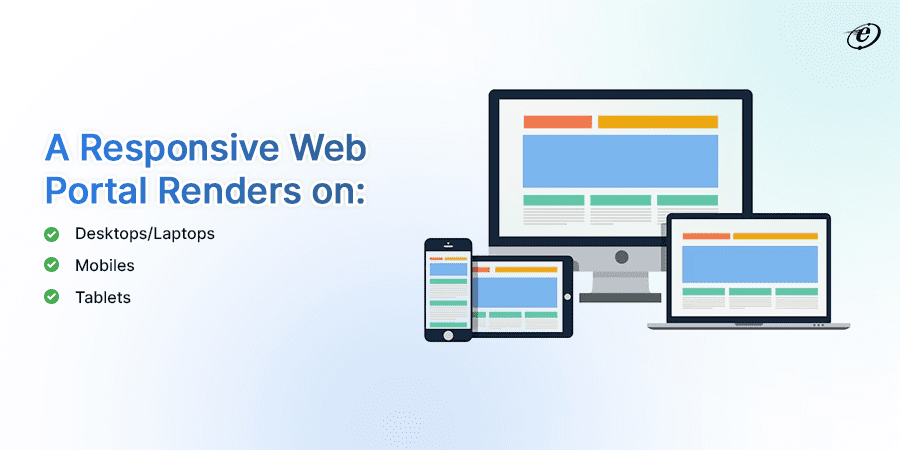
However, responsive design solves this challenge. This web portal development strategy includes designing pages that render across various devices smoothly.
In simple words, responsive website design services ensure that your online portal adjusts to different devices like follows:
- Desktops
- Laptops
- Smartphones
- Tablets
Such a portal or website scales the content to match any screen size. As a result, users do not need to zoom in or scroll the web portal to view the content. Responsive design, thus, has a positive impact on user experience.
Instead of developing a separate mobile version of your website or portal, you can contact a responsive web design company to experience all the significant benefits. The subsequent section lays down these advantages in brief.
Responsive Design in Web Portal Development: The Significant Benefits
Here are the main benefits of responsive design that make it a prominent inclusion for portal development.
1. Ability to Leverage Small Screen Devices

Here is an interesting and valuable stat – global smartphone users can reach the 6.2 billion mark by 2028. So, as a business, you should leverage this vast user base by developing portals for small screens.
By using responsive website design services, it is possible to create portals that match the dimensions of smartphone screens. Notably, such a development strategy can help increase conversions and drive more engagements.
2. A Cost-effective Strategy

Think about this – you hire different service modules to develop an online desktop-based website and a mobile-compatible version. The costs associated with such distinct developments can put a dent in your budget.
On the contrary, the use of responsive design in web portal development can save you invaluable financial resources. Using additional code, dedicated developers can create a portal that is compatible with various devices.
3. Improvement in Page Loading Speed
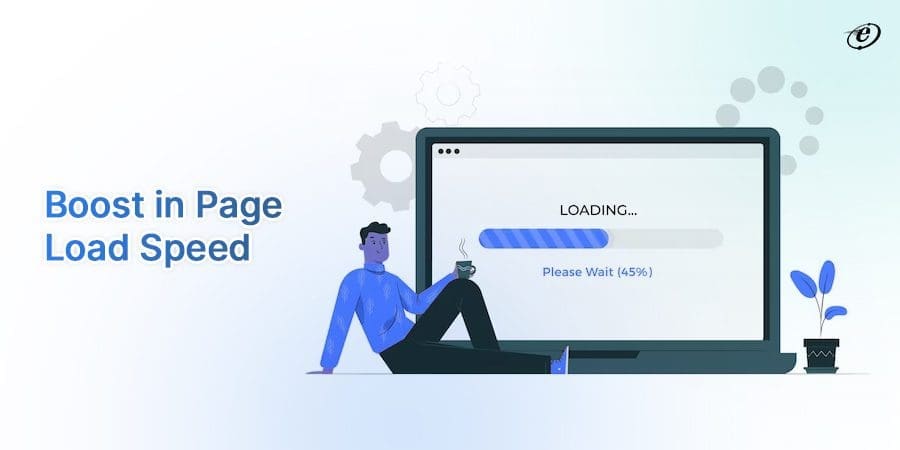
One of the top benefits of responsive design is the ability to create fast, mobile-friendly web portals. It is vital to understand that page speed has a direct and critical impact on your organic traffic and customer experience.
Ideally, your website or portal’s loading time should be under 3 seconds. This duration is a recommendation from ‘Think with Google.’ Responsive design enables easy optimization of mobile-friendly sites in the web portal development process.
So, you can experience more traffic and conversions as users can quickly access the required information without delay.
4. Ease of Maintenance
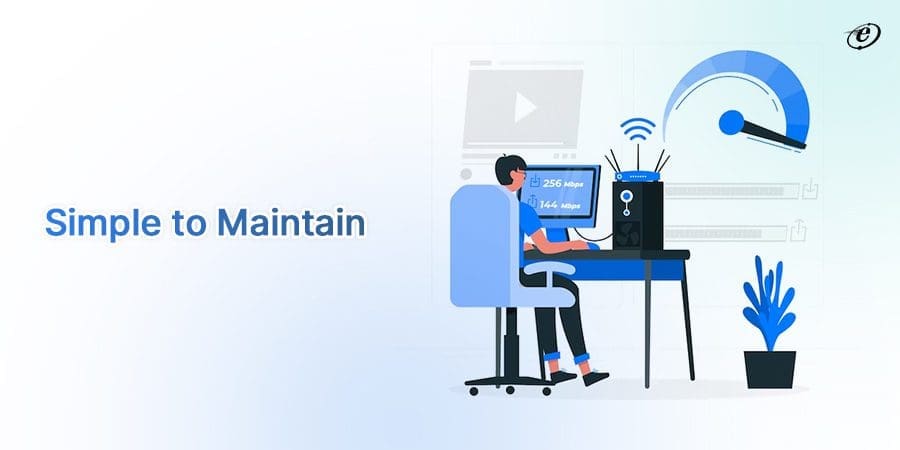
Responsive design in custom web portal development ensures that you do not need to pay particular attention to different online sites. Be it a corporate portal or a B2C website, a responsive design strategy can reduce the time for testing and maintenance of different applications.
This way, routine maintenance becomes easy. So, your development team can focus on other aspects like content, UI, and online marketing.
5. Seamless Sharing on Social Media
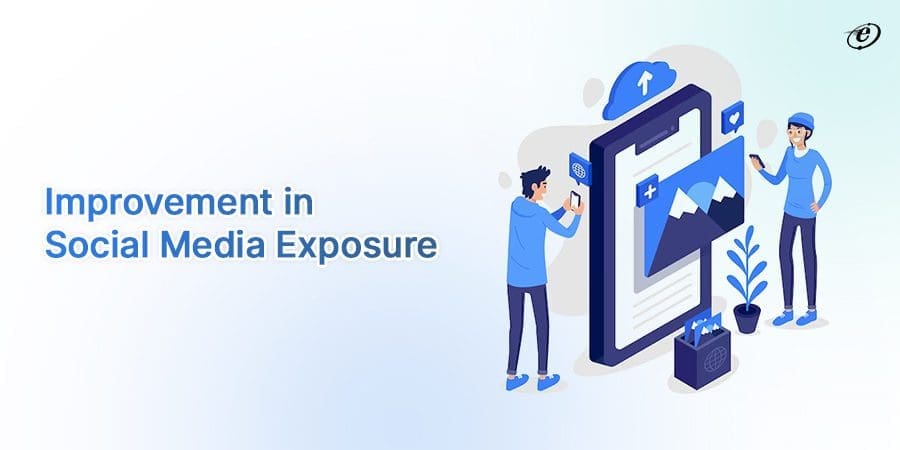
Developers in a responsive web design company use specific methodologies to embed social media sharing capabilities. Users can easily share content on your web portal using such convenient plug-ins.
This activity ensures an increase in social traffic to your portal or website. As a result, your web portal development process becomes refined. A good presence on social media leads to an improvement in the online activity and visibility of your website.
Responsive design enables dedicated developers to add social share buttons, icons, or other elements. So, your mobile-friendly portal becomes an engaging prospect.
6. Prevention of Duplicate Content
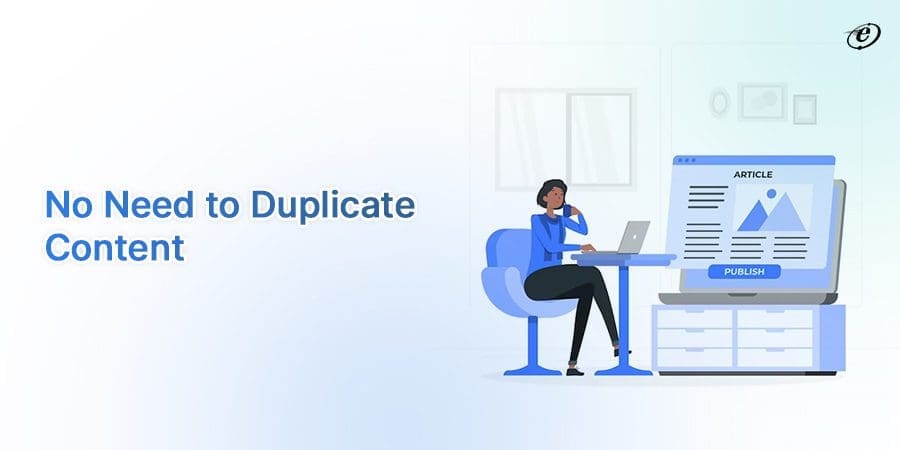
Two versions of a web portal or website require your team to create duplicate content. This activity in web portal development can lead to low search engine rankings on different devices.
To avoid such a scenario, responsive web design becomes crucial. By creating a single website that renders well across multiple devices, your team does not need to create duplicate content.
This way, the need for different SEO strategies becomes redundant. All these factors add to the convenience of content creators. Also, your organization can save additional expenses for creating different content for distinct devices.
7. Reduction in Bounce Rate
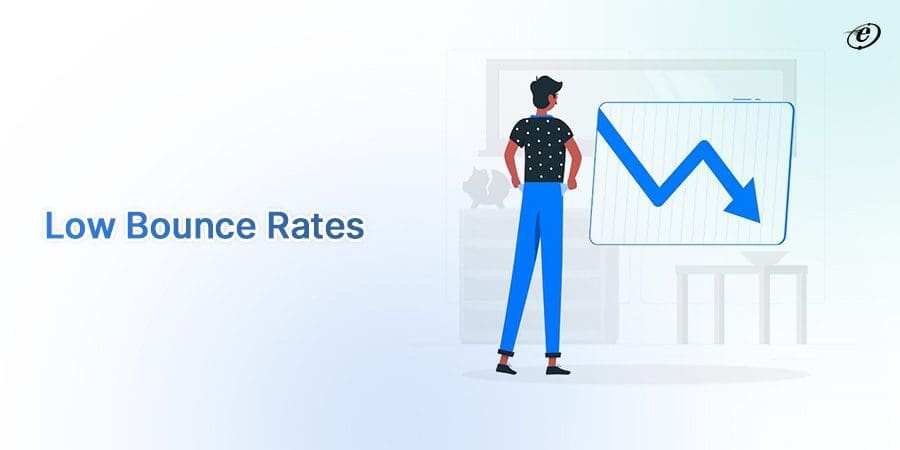
According to a GoodFirms survey, nearly 73% of designers believe that non-responsive design is the main culprit for visitors to leave a website.
So, to counter this scenario and lower bounce rates, you need to choose reliable, responsive website design services. Initially, you might focus on the content aspect and its relevancy to minimize bounce rates. However, the design aspect of web portal development plays a significant role in retaining customers.
A responsive design that enables smooth navigation captivates user attention. As a result, they remain active on your portal. This facet increases the probability of revisits and is thus crucial in the portal development process.
8. Boost Search Engine Optimization (SEO)

Responsive design is crucial for your web portal development process as it positively impacts your SEO results.
The focus of Google is high on website responsiveness. As a result, responsive design from a reliable developer can improve search engine rankings drastically. This advantage applies to both websites and web portals. (Click here to understand the difference between web portals and websites).
In a Nutshell
Approaching a responsive web design company can prove a good decision on several fronts. First, such organizations have a team of skilled experts who understand the technicalities of responsive design. Next, you can augment the web portal development process by properly implementing this development strategy.
A responsive web portal renders well on devices like desktops, phones, and tablets. Notably, you do not need to plan additional steps in the portal development process for creating such a scalable online asset.
Along with boosting SEO, responsive design is vital to improve page loading speed, increase multi-device compatibility, and reduce development costs. In addition, responsive website design services ease social media integration, lower bounce rates, and help prevent the use of duplicate content.
To bolster your web portal development process with responsive design, you can connect with organizations like eLuminous Technologies. Such companies have a team of dedicated developers who can implement sound, custom web portal development strategies using responsive web design.
Frequently Asked Questions
1. What are the main components of responsive design in portal development?
The three main elements of responsive design for web portal development are flexible images, media queries, and fluid grids. Skilled technicians follow a systematic process to use all these components while developing client portals.
2. What are some vital points to creating a responsive website design?
Covering aspects like responsive breakpoints, typography, fluid grid initialization, and a pre-designed theme is central when creating such websites or portals. Connect with a professional, responsive web design company to cover all the technicalities adequately.
3. What is the main benefit of responsive design in custom web portal development?
The most significant advantage of responsive design when developing portals is the enhancement of user experience. By creating a portal that scales according to a device’s screen dimensions, visitors do not need to perform additional actions. This benefit results in better UX and improves the chances of experiencing high conversion rates.
4. What are some main pointers that developers follow for creating a responsive web portal?
Skilled developers consider conditional loading, orientation types, native hardware capabilities, and the design of layouts during the portal development process. Such technical factors help create mobile-friendly websites that adapt according to the screen dimensions.
5. Do responsive website design services fall under front-end development?
Yes. Developing responsive websites or portals is one of the primary responsibilities of front-end developers. So, several companies connect with professional and dedicated developers that are well-versed in using front-end technologies like React, Angular, HTML, CSS, and JavaScript. If you want to leverage responsive design in your web portal development process, connecting with eLuminous Technologies can prove a good decision.



